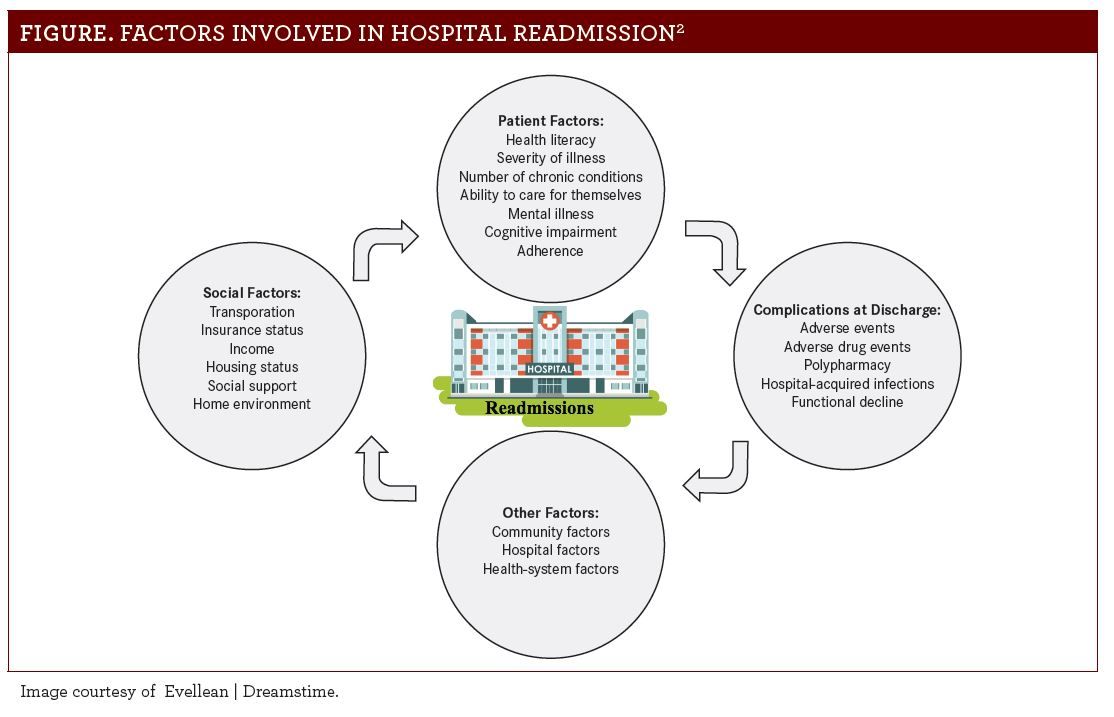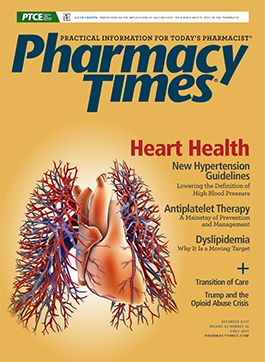Publication
Article
Pharmacy Times
Transition of Care: An Opportunity for Community Pharmacists
Author(s):
An estimated 20% of 30-day hospital readmissions happen because of an uncoordinated transition of care.
Evidence of Concern
An estimated 20% of 30-day hospital re-admissions happen because of an uncoordinated transition of care. According to Medicare, preventable re-admissions cost more than $17 billion each year. And a big percentage of re-admissions are due to improper use of medication post-discharge, with about 2% of medication discrepancies life-threatening or even fatal.1 For a list of factors involved in hospital re-admission see the Figure.2

Recent research has shown that having a pharmacist perform medication therapy assessment at discharge decreases 30-day re-admission rates and results in annual cost savings of up to $1.5 million. Thus, many hospitals have incorporated pharmacists into the discharge process. However, there is still a disconnect between discharge and community pharmacists.1
After discharge, the number of patient-health care provider interactions decrease. Many patients are not prepared to navigate the complex health care system and are at risk of medication-related adverse events. It is estimated that almost 20% of those who are discharged from the hospital experience such events, and more than 50% of those may be preventable. Community pharmacies are more accessible to patients than other health care providers after discharge, which puts them in the perfect position to help decrease preventable medication-related adverse events and improve transition of care.3
Barriers
Although incorporating community pharmacists into the transition-of-care process makes sense, that does not mean that it is easy. Even though several transition programs have been developed and introduced across the country, there are multiple barriers that often discourage community pharmacists from developing these programs.1 To help community pharmacists overcome the barriers associated with offering transition-of-care services, the National Community Pharmacists Association has developed a comprehensive toolkit. This kit includes information about the opportunity, concept documents, sample contract language, information on accessing hospital data, relevant articles, how transition-of-care programs fit into the business model, details about the services that a pharmacist can offer, and even how to pitch local hospitals.4,5 For a list of barriers, see the Table.

Recent research shows that a patient’s access to medication post-discharge poses a significant problem. In fact, the results of 1 study showed that just 40% of patients filled their prescriptions on the day of discharge, while another 40% waited at least 9 days to fill their prescriptions, and 22% waited at least 10 days. These alarming percentages may be partly because discharge often occurs on a busy Friday afternoon when patients are given a stack of paperwork, including discharge orders and prescriptions, leaving them overwhelmed and confused.5
Those patients who head to the pharmacy right away often face issues such as cost problems with prior authorizations, out-of-stock medication, and prescriptions that need clarification. These could be all avoided if community pharmacists were involved in the transition-of care-process prior to discharge.5
Implementing a Transition-of-Care Program1
Don’t know where to start? No problem. Pharmacists can follow these 5 steps to get a program off the ground.
- Establish affiliations with hospitals and insurance companies. The pharmacy closest to where most a hospital’s patients live, would be the preferred pharmacy for the partnership.
- Advertise pharmacy services through pamphlets, websites, and other avenues.
- Qualify patients for the pharmacy’s transition-of-care program, such as those
discharged from hospitals within the past 30 days or based on the minimum number of hospital admission days, the severity of disease states, and other risk factors for re-admission. Determine restrictions for qualifying for the program, such as the number of medications or co-morbid conditions.
- Require patients to contact the pharmacy within 3 days of discharge to qualify for transition-of-care services.
- Determine a process for the program such as requiring patients to bring important documentation such as discharge notes, a list of medications, and the phone numbers of their pharmacies and health care providers to ensure that the visit is effective. If the patient does not have the discharge paperwork, the pharmacy will need to request
the proper documentation from the hospital. During the first visit, the pharmacist will perform a complete medication review of pre- and post-discharge medications to identify medication discrepancies, therapeutic duplication, identify other issues, and address any safety issues. The pharmacist will then provide education regarding the health condition, medications, and proper medication use, in addition to promoting medication adherence.
Make sure to provide patients with written instructions regarding their medication strategy, and notify the patient’s primary care providers of the patient’s health status and of any medication changes. After the first visit, follow up with the patient. either face to face or over the phone. During the follow-up visits, assess the patient’s medication adherence, the efficacy of treatment, medication-related adverse events, and patient concerns.
The number of visits that a patient requires post-discharge varies. Patients with complex medications regimens, those who take multiple medications, and those who have several medical conditions may require several visits and may require multiple face-to-face interactions in which follow-up via phone may not be the best option. It is important to note that recent research has shown that the rates of re-admission and cost reductions were, in fact, similar when consultations were carried out via phone or in person. This said, patients who are unable to travel to the pharmacy have the option to participate in the program by communicating via phone.
Pharmacists’ Impact in Transition of Care
Implementing a successful transition-of-care program can reduce hospital re-admission rates, improve patient safety and health outcomes, all while saving the health care system money. And community pharmacists, the health care professionals who have the most interaction with patients post-discharge, are often underutilized. Incorporating community pharmacists into the transition-of-care model is an intervention that can make all the difference. Being an integral part of the transition-of-care process, pharmacists can not only show their value but move the pharmacy profession toward being recognized as comprising health care providers.1
Dr. Anyssa Garza, PharmD, received her doctor of pharmacy degree from The University of Texas at Austin before becoming the director of pharmacy for a Central Texas Department of Aging and Disability facility. She now serves as the vice president of Content and Patient Education Programs at Digital Pharmacist. In this role, she provides patients with medication information and medical knowledge that will contribute significantly to the quality of care they receive and improve their quality of life and health outcomes. Her work focuses on educating patients and providing them with the resources they need to navigate the overwhelming and complex health system. She also is an adjunct assistant professor at The University of Texas at Austin.
References
- Brown T, Li L, Lee E. Improving transition of care: opportunities for community pharmacists. Inside Patient Care. insidepatientcare.com/issues/2017/february-2017-vol-5-no-2/455-improving-transition-of-care-opportunities-for-community-pharmacists. Published February 2017. Accessed August 5, 2017.
- Rennke S, Ranji SR. Transitional care strategies from hospital to home: a review for the neurohospitalist. Neurohospitalist. 2015;5(1):35-42. doi: 10.1177/1941874414540683.
- Bulloch M. Pharmacists can help overcome challenges in care transitions. Pharmacy Times. pharmacytimes.com/contributor/marilyn-bulloch-pharmd-bcps/2017/01/pharmacists-can-help-overcome-challenges-in-care-transitions-. Published January 4, 2017. Accessed August 5, 2017.
- National Community Pharmacists Association. Transitions of care. ncpanet.org/innovation-center/diversified-revenue-opportunities/transitions-of-care. Accessed August 5, 2017.
- Day K. Coordination and continuity required. America’s Pharmacist website. ncpa.co/issues/APJUN16-TOC.pdf. Published June 2016. Accessed August 22, 2017.







